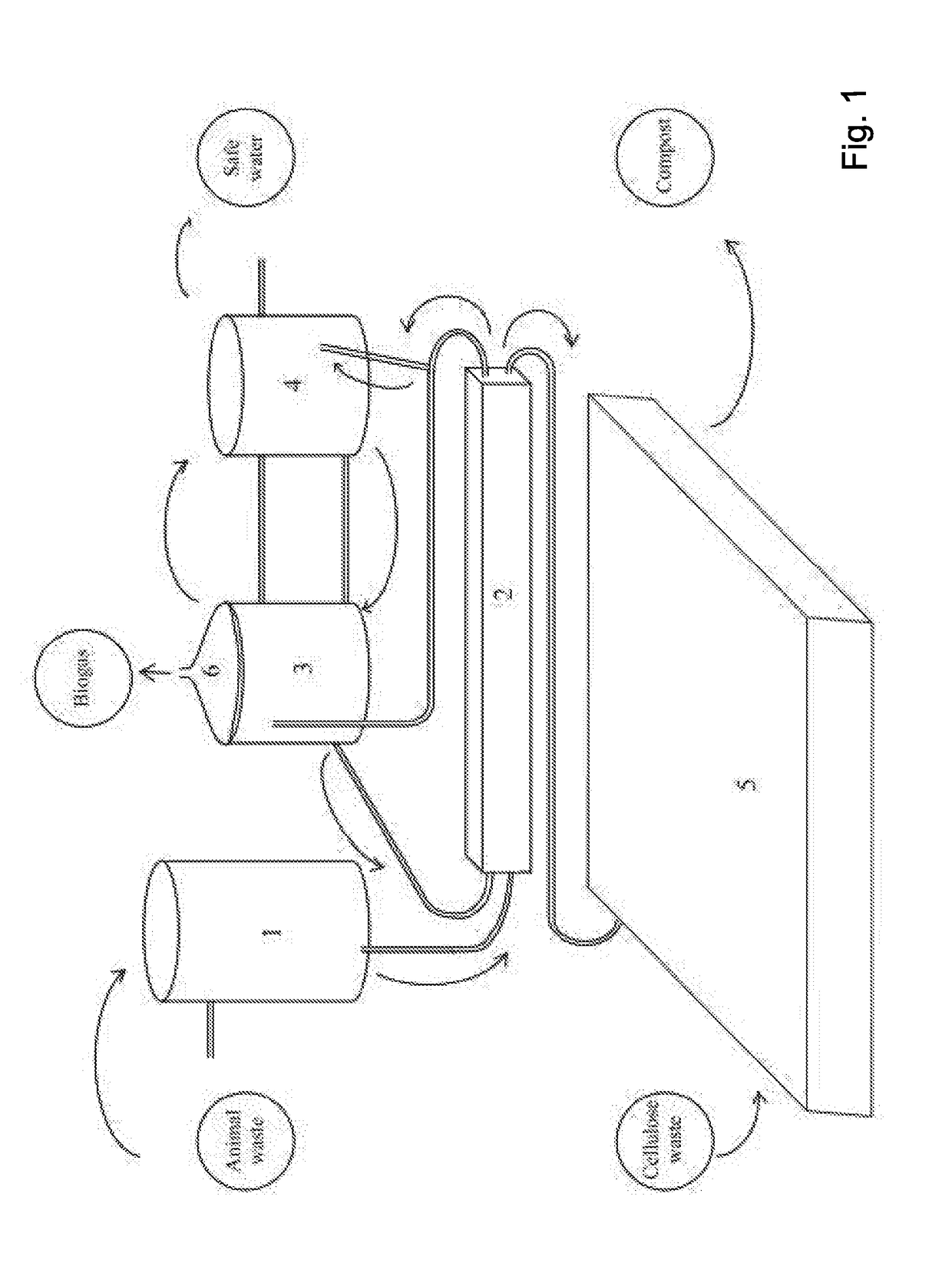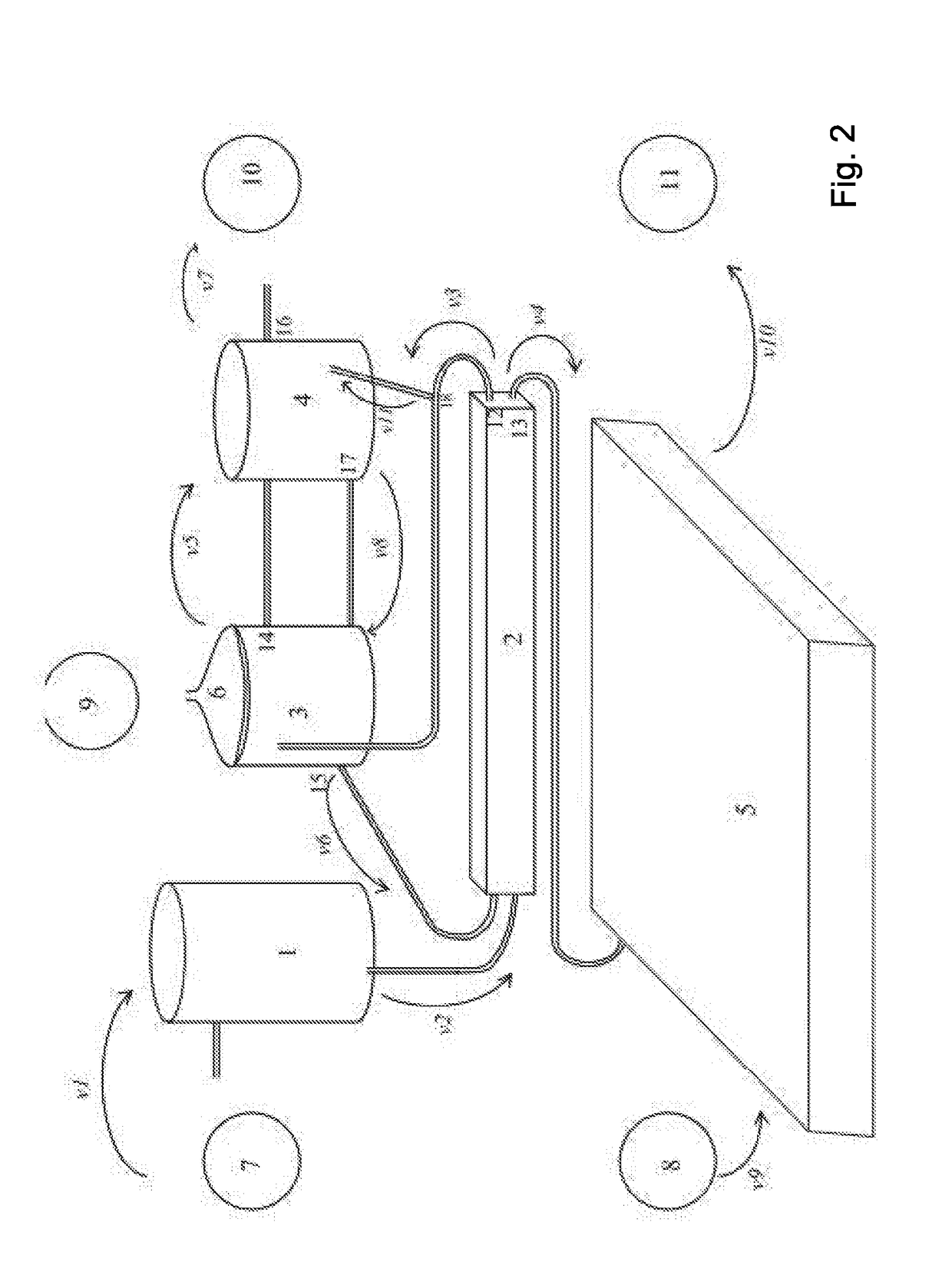Process and facility for the treatment of livestock waste
a technology for livestock waste and processing facilities, applied in the field of livestock waste treatment, can solve the problems of limiting the size of pig farms, high installation cost of large-scale operations, and difficult to solve in the short-term and long-term, and achieve the effect of economic less demanding and efficient process
- Summary
- Abstract
- Description
- Claims
- Application Information
AI Technical Summary
Benefits of technology
Problems solved by technology
Method used
Image
Examples
example 1
[0048]A prototype facility was built in a North Israel piggery, in order to process waste collected from ˜4,000 pigs. The facility is a sequential, biological treatment facility for the treatment of daily throughput of 50 cubic meters of liquid waste. The treated waste contained pig urine, excrements, and washing water from a piggery. The medium-sized facility comprised a 200 m3 pretreatment channel and two reactors of 100 m3 each, serving as the anaerobic and aerobic reactors. About 50 m3 of the collected raw waste water from the collecting basin was pumped to the pretreatment channel every day. The channel was further fed with an activated sludge from the anaerobic reactor, from the lower part after settling. The lower part of the liquid in the channel, with precipitated solids, was led to the compost basin, wherein it was mixed with wood splinters, 5 m3 slurry a day and about 5 tons splinters. Two batches of 25 m3 each were daily collected from the end of the channel to the anaer...
example 2
[0051]A small pilot system was built in a Central Israel cow shed with 300 milking cows, processing waste collected from 20 cows. Liquid waste was processed similarly as in Example 1, but about 20 times lower volumes of the pretreatment channel and two reactors were employed (about 6 m3 channel reactor and about 5 m3 each), serving as the anaerobic and aerobic reactors. About 3 m3 a day of the collected raw waste water from the collecting basin was pumped to the pretreatment channel, and the water from aerobic reactor was filtered on a sand filter, and further in a sequence of μF / CF1 / CF2 followed by RO device and the final CF3.
CODN—NH4ChloridesPolyphenolsNa(mg / l)(mg / l)(mg / ml)(mg / ml)(mg / ml)Outlet11908933459253from SBRSaline135010136657256dischargeFinal pure12937157112water
PUM
 Login to View More
Login to View More Abstract
Description
Claims
Application Information
 Login to View More
Login to View More - R&D
- Intellectual Property
- Life Sciences
- Materials
- Tech Scout
- Unparalleled Data Quality
- Higher Quality Content
- 60% Fewer Hallucinations
Browse by: Latest US Patents, China's latest patents, Technical Efficacy Thesaurus, Application Domain, Technology Topic, Popular Technical Reports.
© 2025 PatSnap. All rights reserved.Legal|Privacy policy|Modern Slavery Act Transparency Statement|Sitemap|About US| Contact US: help@patsnap.com



